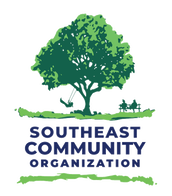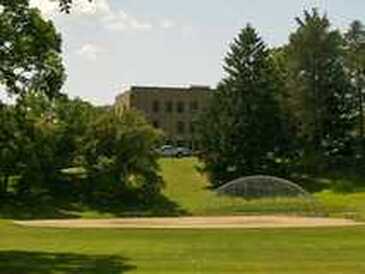|
The Ramsey County Board met recently to discuss how it plans to set programming for its juvenile justice system. After many discussions last fall and spring with community members, and with juvenile justice professionals, they concluded that the best option for our youth is to have them housed in small, family-like settings in various neighborhoods throughout Ramsey County rather than in a single large facility. They will still need a facility for "out-patient" work and schooling and to house staff, and right now it looks like that larger facility will be in Roseville - easily accessible by public transit and more centrally located than Boys Totem Town. The girls in the system, who have all previously been sent to Greater Minnesota or out-state, will likely be housed with Hennepin County, since that County already has a program for girls. Hennepin and Ramsey County remain committed to sharing programming knowledge and resources - just NOT a single facility.
The final decision about what will happen with the placement of youth offenders won't happen until June 2018, or perhaps a bit later. But in all likelihood, only a small portion of the Boys Totem Town site will be retained by the Ramsey County for its juvenile justice program. THIS IS NOT YET A FINAL DECISION, but it is looking more and more likely. HOWEVER, because development of the smaller facilities and their placement throughout Ramsey County will take some time, Boys Totem Town would not be vacated for AT LEAST another 2 years. The City of Saint Paul is being encouraged (by Ramsey County) NOT to begin its process until closure of Boys Totem Town is imminent, probably in 2019. A lot can happen between now and June 2018, let alone, between now and 2020... No one wants to spend time and money planning for an uncertainty. At this point, District 1 remains committed to its community-building efforts in the Boys Totem Town vicinity, beginning with a meeting in January 2018 with Commissioner Jim McDonough to provide the latest news and to answer questions. We are having some difficulty settling on a date and place for this meeting, but it should be in the week of January 22. The Boys Totem Town Work Group will not meet again until sometime after the January meeting. Stay tuned for more news.
1 Comment
Our apologies for not getting last month's notes out earlier. We have been extremely busy in the office with the City-wide Drop Off Day, completing our Equity Plan, getting community gardens off to their seasons, and a remodel of our office... As well as our regular day-to-day work with residents...
In May, the Work Group met to try out a new method for gathering input from the community - an individual and group mapping exercise. The method did not show promise for large group work, so staff has been reformulating other approaches to gather as much input from as many neighbors as possible. We hope to use a modified version of this mapping exercise in small groups in the future. We will roll out our new large group approach at the July 22 Peace Celebration at Battle Creek Rec (3-7p), a family-oriented celebration of cultures that is being organized by a local Somali resident. In June, we heard from Jim Erchul of the Dayton's Bluff Neighborhood Housing Services to learn about how potential developers would look at a site like Totem Town and assess whether they would invest and, if so, how they might envision development. This led to a very informative discussion about the limitations and potentials of the site - what is attractive and what is problematic, from the developer's point of view. We learned about developers' dislike of uncertainty in the outcome of their efforts - uncertainty arising from regulatory constraints, lack of preparedness and agreement on the part of neighbors, and costs of basic infrastructure. We also learned - or were confirmed in our sense - that it is extremely important that we, as a neighborhood and as a City, have a master plan for the site. We invited Jim because DBNHS is not a developer that would take on a site like this one, but one that has experience in innovative approaches to neighborhood development and with dealing with governmental partners on a regular basis. He provided deep insight into how the City and County approach projects. We want to publicly thank Jim and DBNHS for their willingness to help in our education around these issues. As Work Group members share what they learned with their neighbors, we become better prepared for the future that we will be building together. We still await a decision by Ramsey County for how they envision their juvenile justice facilities meeting their juvenile justice program needs. In the meantime, we continue to gather ideas for what the neighborhood and the district considers the best use for this site. We hope to see neighbors on July 22 at Battle Creek Rec, and still plan a large community meeting about the site in the fall, with updates from the County and (we hope) more details from the City about their processes. Stay tuned... The April 10 meeting of the Boys Totem Town Workgroup involved a lengthy discussion of the March 25 community workshop, which is summarized in an earlier blog. Each of the four groups' facilitator teams reviewed the discussions in their groups and then commented on what worked and didn't work in the format and process of the workshop. We also outlined what type of information still seems to be either lacking or misunderstood about the objectives and process of this work. Our summary of the workshop tries to address the misunderstandings that remain.
The rest of the meeting was a presentation about housing issues in the Metropolitan area, and goals for meeting future housing needs by the City of Saint Paul. The purpose was to educate the work group members on housing issues, NOT to say that we are looking at housing for the BTT site specifically. We heard a history of the interaction of race, poverty and housing and how this history has resulted in the concentration of low income and "affordable housing" within certain neighborhoods. We reviewed the results of the predatory lending practices of financial institutions during the housing bubble and its aftermath on communities of color and low income communities. We looked at the City's Comprehensive Plan (2010 version) related to housing, at the District 1 Community Plan related to housing, and at data in the City's Consolidated Plan that sets HUD housing goals. The latter identifies roughly 50 new low income housing units needed in District 1 as a whole, with an emphasis on such housing being along transit corridors. Looking at people's housing AND transportation needs in combination is vital to creating successful housing. This presentation was one of many that provide background to the work group as it assesses input it gets from our community workshops. Previous presentations have included one on the Highwood Plan and on demographic change in District 1. |
AuthorSouthEast Community Org Staff Archives
April 2020
Categories
All
Meeting Summaries
Resources
|
||||||||||||||||||||||||||||||||||||||||||||||||

Copyright©2022 Southeast Community Organization
SunRay Shopping Center 2105 1/2 Old Hudson Road St. Paul, MN 55119 [email protected] 651-578-7600 |

 RSS Feed
RSS Feed